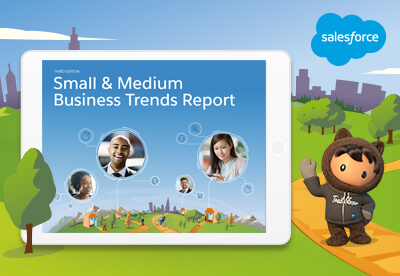
It’s tax time. We’re busting the FY19/20 tax myths for small businesses
Recent months have been anything but business as usual: the global pandemic has seen borders closed, businesses shuttered and employees stood down en masse.
Such change and uncertainty has allowed many myths to circulate, particularly around the end of financial year (EOFY) requirements.
So, let’s set the record straight and bust the biggest FY19/20 tax myths for SMBs:
Myth 1: This tax time will be vastly different
“There’s an expectation that because so much has changed in the last 100 days, tax time will be radically different this year… the reality is that’s not the case,” explains Matthew Prouse, Head of Industry at online accounting software company Xero.
“EOFY this year will operate very similarly to how it has for the past 20 years. There’s no new fields on the tax return for COVID-19.”
The most notable change, Matthew points out, is that social distancing requirements may mean appointments with your accountant or bookkeeper will be done online instead of in-person.
“We’re hearing lots of accountants and bookkeepers are implementing digital ways to do tax returns, so I think that’s the real change we’re going to see this year.”
Myth 2: JobKeeper doesn’t get taxed
Don’t be fooled: JobKeeper payments are still a form of income, and as such, PAYG tax still applies.
The ATO also has a bespoke JobKeeper guide for sole-traders to help you determine your tax liabilities.
Be sure to retain proper records and pass on the payments to employees in full – the ATO is doing JobKeeper compliance checks to ensure everything is above board.
Myth 3: Everyone can use the home expenses shortcut method
In April, the ATO unveiled a new shortcut method for claiming work-from-home expenses, with a fixed rate of 80 cents per hour. However, there are a few restrictions on using this simplified method.
Firstly, it only applies to hours worked at home from 1 March, 2020. And it doesn’t waive the need for records to substantiate claims.
Most importantly, Matthew says it is only available to employees.
“If you’re a business owner or you’re self-employed, you don’t have access to the shortcut method,” he says.
“You will still need to calculate just the business component of your expenses.”
Myth 4: Single Touch Payroll is put on hold
The transition to digital payroll reporting, known as Single Touch Payroll or STP, is continuing as originally planned.
That means you won’t have to provide payment summaries to employees where information has been reported through STP.
However, a finalisation declaration is required by 14 July if you have 20+ employees, or by 31 July if you have 19 or less employees.
Myth 5: The asset write-off ends on June 30
As part of its stimulus, the government significantly enhanced the instant asset write-off for SMBs, offering immediate depreciation deductions on purchases up to $150,000.
“This had been due to expire on 30 June, but it’s now been extended through to the end of December 2020,” Matthew explains.
“It means that eligible businesses don’t need to rush through purchases before EOFY to claim the immediate deduction.”
Myth 6: The usual rules no longer apply
While there has been a lot of change in recent months, the same basic tax rules will still be relevant in FY19/20.
That means you will still need to:
Retain good records, particularly for business expenses.
Reconcile your bank accounts.
Disclose all sources of income. The ATO uses sophisticated data matching, meaning it will know, for example, if you rent out premises through Airbnb or accept payments in cash.
Ensure your accounting software is up-to-date. This is important both for functionality as well as security updates.
Overall, this tax time won’t be much different from previous years. If you’re honest and declare everything in full and on-time, with the help of your accountant or bookkeeper, you shouldn’t have any problems navigating EOFY for 2019/20.
Want to learn more about navigating this year’s financial landscape? Hear from Xero and Salesforce as they answer top tax concerns to set you on the path back to financial stability in our Navigating Back To Financial Stability webinar.
Salesforce Resources





